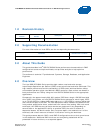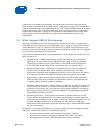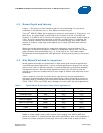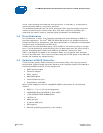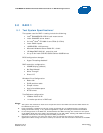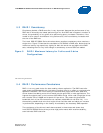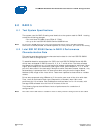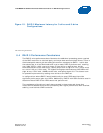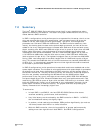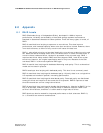
Intel
SSD DC S3500 Workload Characterization in RAID Configurations
December 2013 White Paper
329903-001US 13
5.3 RAID 1 Consistency
Consistency behind a RAID controller is very important because the performance of any
RAID set is limited by the lowest performing drive. As a RAID set increases in number of
drives, the probability of any given drive performing poorly increases. Therefore, if the
model of drive used is inconsistent in its performance, the inconsistency increases with
the size of the RAID set.
The Intel
®
SSD DC S3500 Series drive has shown excellent consistency when used as a
single drive. Figure 5 illustrates the consistent of DC S3500 in RAID sets. Notice that the
maximum latency is grouped very tightly for both the two-drive and eight-drive RAID
sets, indicating there is very little change in consistency as more SSDs are added.
Figure 5. RAID 1 Maximum Latency for 2-drive and 8-drive
Configurations
Intel internal testing, October 2013
5.4 RAID 1 Performance Conclusions
RAID 1 is a very good choice for data needing robust replication. The RAID controller
used shows good bandwidth with low latency causing little to no effect on read and write
speeds of the SSDs. The linear scaling of read and write performance with additional
drives shows that adding more drives would provide good ROI in most applications. The
highest throughput seen in this test was 2300 MB/s during 100% read using eight drives
with transfer size of 128KB and a queue of 8 per drive. This means the theoretical
bandwidth limit of the PCIe lanes was not reached (4000 MB/s for x8 PCIe 2.0). It is
theoretically possible that more than eight drives could be used and obtain an increase
in performance, depending on the latency introduced by the necessary SAS expander.
The consistency of the drives is well demonstrated in these tests and shows that
Intel SSD DC S3500 Series drives provide high performance with excellent stability,
even behind a RAID controller.




